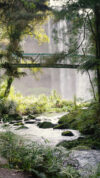Lesen Sie unsere Paper und Poster
Hier können Sie weitere wissenschaftliche Veröffentlichungen herunterladen
Ludwigs et al. (2017) Skylarks nesting in pesticide-treated fields compared to those nesting in non-treated agricultural land and main reasons for complete nest loss
Pesticides are commonly considered a cause of species decline in farmland. In the past, most studies have focused on acute effects of pesticides on adult birds or on indirect effects on offspring (e.g. mortality due to limited food resources as a result of pesticide use).
Nikisch, Llandera, Lutz (2017) Step4ward – An Efate Toolbox
‘Step4ward’ is a user-friendly Windows® toolbox to automate PECsw calculations, extract data from the current models FOCUS TOXSWA and SWAN and create MS Word® tables in the current dRR format.
Ludwigs et al. (2016) Appropriate Exposure Estimates for Wildlife Risk Assessments of Crop Protection Products Based on Continuous Radio Telemetry: A Case Study with Woodpegions
The registration of pesticides follows guidance published by the European Food Safety Authority (EFSA). As a default, the EFSA guidance document on risk assessment for birds and mammals assumes that animals feed exclusively on pesticide-treated fields.
Schmidt et al. (2016) High genetic structuring of Tula hantavirus - Archives of Virology
Official Journal of the Virology Division of the International Union of Microbiological Societies
Lückmann, Ludwigs, Delgado-Cartay (2015) Non-target organisms – higher-tier methods to refine the risk of plant protection products
Lückmann, Becker (2015) Honeybee brood studies under field conditions: Is there a difference of the brood termination rate compared to semi-field studies?
Based on EU Regulation 1107/2009/EC the current regulatory risk assessment on bees has to address the risk to honeybee larvae or honeybee brood. According to the data requirements under EC 1107/2009 Commission Regulation 284/2013 and the proposed EFSA Bee Guidance Document (EFSA 2014), both the Oomen bee brood feeding test (OOMEN et al. 1992) as well as the OECD Guidance Document 75 (OECD 2007) (hereafter called OECD GD 75) are given as the two higher tier options to refine the risk on honeybee brood if concerns are raised in tier 1.
Ludwigs et al. (2015) A statistical approach for selecting the most appropriate PT value for long-term wildlife risk assessments
In higher tier Risk Assessments (RAs) for Birds and Mammals, exposure takes into account the ‘portion of food taken from the treated area’, addressed by the surrogate parameter portion of time spent by birds or mammals potentially foraging in treated fields (the so-called PT value).
Nickisch, Krömer (2015) A standardised approach to identify worst-case FOCUS surface water exposure profiles in aquatic pulsed exposure events
The outcome of Tier 1 risk assessment for plant protection products frequently calls for the use of higher tier approaches to evidence an acceptable risk to aquatic organisms. In this context, laboratory pulsed exposure experiments can be used to test the effects of varying exposure concentrations on the mortality and/or immobilization of organisms.
Körner et al. (2014) Insecticidal activity of a PPP as a criterion to trigger laboratory studies with non‐Apis bees? Make a BeeCision!
Over the last six years, the effects of plant protection products (PPP) on pollinators such as honeybees have come increasingly to the attention of both scientists and the general public. In 2013, under the new EU Regulation 1107/2009, the European Food Safety Agency (EFSA) published a preliminary new guidance document (GD) on risk assessment for pollinators.
Schabacker et al. (2014) Focal Bird Species and Risk Assessment Approach for Nonagricultural Grassland Scenarios in Central Europe
The European Food Safety Authority (EFSA) guideline on risk assessment identifies pesticide exposure scenarios for nontarget wildlife; however, this scheme is not applicable to nonagricultural grassland. For example, different habitats and human utilization on golf courses attract bird communities that differ from those found in agricultural fields with annual crop cycles.
Gaviria, Hörold (2014) Tool for Estimating Application Dates for FOCUS Surface Water Scenarios Based on Plant Growth Stages
When using the SWASH FOCUS model shell, application dates are required for the calculation of predicted environmental concentrations (PEC) in surface water. It is necessary to define these application dates for each scenario and crop. However, to-date, no guidance describing a uniform procedure to find adequate application dates based on BBCH codes provided in the GAP table has been implemented.
Nickisch, Erlacher (2014) Modelling concentrations of PPP in ground water after spray application to hop
Hop is not available as crop in the FOCUS groundwater models. In this study we tested if it is necessary to consider the singularity of a crop for the registration of a pesticide or if it is possible to use one of the existent FOCUS crops as a surrogate. Calculations were performed for the non-FOCUS crop hop using hop specific data (e.g. LAI) derived from field measurements.


